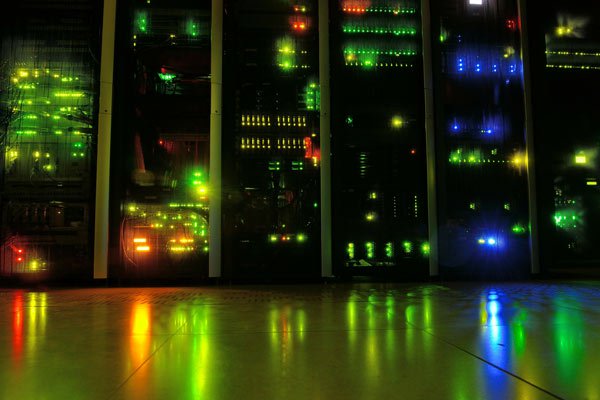 RAID is an acronym for Redundant Array of Independent Disks. With RAID, your servers can remain functional, even if one or more disks fail in your cluster.
RAID is an acronym for Redundant Array of Independent Disks. With RAID, your servers can remain functional, even if one or more disks fail in your cluster.
RAID has been used in enterprise servers for decades. The original purpose of RAID was to combine inexpensive disk drives into an array which provided a single storage unit that provides higher capacity, fault tolerance, and increased disk I/O speeds.
As RAID technology has matured, RAID is now being used to ensure the redundancy of Network Attached Storage (NAS) devices. These storage appliances are commonly used in large enterprise network computing environments.
Examining the Different Types of RAID Storage Schemes
There are different types of RAID storage schemes available which are referenced by their respective mode numbers.
These numbers indicate the scheme in which your system administrator has configured the disks to operate. While there are several different types of RAID configurations available, the three most commonly used RAID schemes are RAID 0, RAID 1, and RAID 5. When more redundancy is needed, system administrators may elect to use some of the more exotic RAID storage schemes.
For example, RAID 6, RAID 5+1, RAID 10, and JBOD are becoming more popular in larger enterprises. Many organizations use JBOD — short for “Just a Bunch of Disks” — to rapidly construct a storage redundancy scheme to their organization’s exact specifications.
Others RAID schemes may exist in software RAID applications such as Microsoft’s virtual disk RAID. RAID implementations such as Netgear’s X-RAID, Drobo’s BeyondRAID, and Synology’s SHR are other examples of exotic RAID configurations that are available on the market today.
For now, let’s just focus on RAID 0, RAID 1, RAID 5 and RAID 6.
Why Should You Use RAID?
Having redundancy setup on the hard drives of your servers could potentially save your business from costly downtime.
Many IT professionals refer to RAID as disk failover protection or fault tolerance. With RAID, organizations can lose a disk in their array and continue on with their day-to-day operations without missing a beat. Most RAID arrays provide administrators with SMART disk stats, which provides alerts to the IT staff if a drive is about to fail within a RAID cluster.
It’s important to note that RAID provides protection against faulty hard drives; however, RAID is not an insurance policy against other potential computing issues that may arise. For example, RAID does not protect your business against data loss that can occur due to malware, accidental file deletions, or natural disasters. RAID is simply a fail-safe for hard drive failures. RAID is not a substitute for proper backup practices.
All RAID levels apart from RAID 0 offer single-drive failure protection, while RAID 6 can be configured to stay online even if two disks fail simultaneously.
When to Use RAID in Your Business
RAID is typically used in servers where fault tolerance is required and data accessibility is critical. As a result, RAID is commonly used on network attached storage devices, as well as servers hosting critical lines of business applications.
RAID may also be used on desktop PCs. Businesses that build high powered desktop PCs for their employees, such as those in the CAD or multimedia editing fields, may benefit from setting up RAID in their desktop PCs. RAID provides robust disk I/O while simultaneously providing hard drive fault protection for those who must use robust applications to storage mass amounts of data locally.
Which RAID Level is Right for My Business?
RAID 0 offers no fault tolerance as the data is striped across 1 or more disks without protection against failures. RAID 0 is typically used in machines that wish to bridge together one or more disks to maximize storage space.
RAID 1 is very slow when compared to RAID 5 and RAID 6. RAID 1 is simply a mirrored disk configuration. So if you had 4 disks working in a RAID 1 configuration, two disks would simply mirror the other two disks. If one disk fails, RAID 1 switches over to the mirrored copy of the disk that it has created for fault tolerance.
What about RAID 5 and RAID 6? Most small to medium sized enterprises elect to use RAID 5 or RAID 6, although some IT professionals have sworn off RAID 5 and only use RAID 6 or 10. RAID 5 and RAID 6 are ideal if you have a limited budget and want to get the most out of the disks you have popped into your array.
With RAID 5, your business can afford to have one disk completely fail while the array continues to operate as if nothing has happened. RAID 5 needs at least 3 physical hard drives to be configured.
With RAID 6, two disks in your array can completely fail without the server’s storage platform failing. RAID 6 could be slower than RAID 5, although many storage architects seem to prefer RAID 6 over RAID 5 due to the extra redundancy built into the storage scheme.
With the rapidly declining costs of SSD hard drives, many storage administrators are beginning to configure SSD hard drives into RAID configurations. These high powered storage arrays provide extra speed for businesses that need their servers to perform at their peak performance.
As SSD prices continue to decline, more businesses will begin using SSD hard drives to build out their RAID storage arrays in order to gain an edge on their competition. To learn more about how RAID can help your business, or to learn about other aspects of server management, give us a call at (833) 482-6435 or click the banner below to schedule a consultation online.
If you enjoyed this IT Support article, please check out other posts on our blog and join us on Facebook, Twitter, LinkedIn, and Google+ to see how else we can help your Greenville, SC or Atlanta, GA area business succeed!

